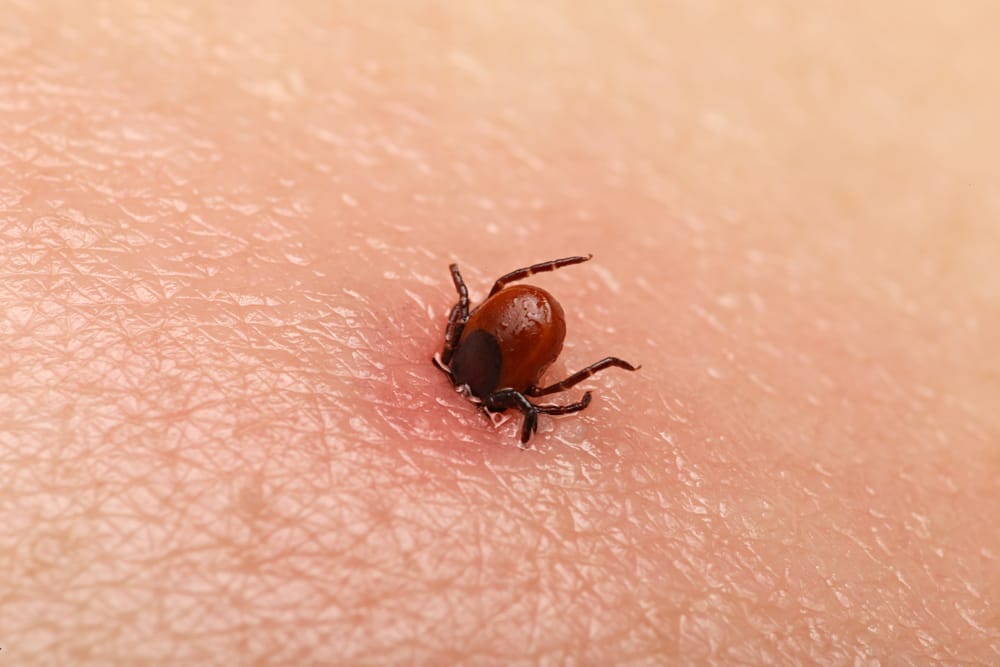Summer is coming, it’s getting warmer, and you’re planning on outdoor activities. Unfortunately, ticks are getting out there as well, and your chances of being bitten are rising. Ticks can cause Lyme disease. Sometimes, the acute infection is missed, remains untreated and evolves into post-Lyme disorder. We interviewed Kenny De Meirleir, an MD who is the Belgian expert in Lyme disease, on the diagnosis and treatment of this disorder.
In 2016, around 10,000 tick bites were reported in Belgium. Borrelia, a bacteria that causes Lyme disease, can be found in 10 to 25% of ticks. What is less commonly known is that ticks may also be implicated in the transmission of other bacteria (such as Rickettsia and Yersinia), parasites and even viruses. Ticks that bite deer can become infected with the parasite Babesia and transmit it to humans. Presumably, this occasionally happens in combination with viruses such as Hepatitis E.
How can Lyme be diagnosed and how can it go undiagnosed?
De Meirleir: We may have to explain the difference between active Lyme and post-Lyme disorder. When people get infected via a tick bite, around 17% develop erythema migrans, a red circle around the place of the tick bite. In an acute phase, people often suffer from a flu-like syndrome, muscle pain, joint pain, fever and fatigue. The diagnosis can be made via a blood test showing IgM and IgE antibodies and then by detecting Borrelia or other pathogens via PCR and/or FISH. This confirms an active Lyme infection.
It seems that Borrelia has an immunosuppressive effect on the immune system, making the body prone to a range of other infections.
Unfortunately, it sometimes takes a long time to link a tick bite and its consequences. When the disease goes unmarked, some people develop a number of weird symptoms like abnormal fatigue, exercising problems, digestive problems, muscle pain, etc. In these cases, no active infections can be found, but the symptoms are due to post-Lyme disorder.
Interestingly, in a study published in the US in 2012 (1), a number of monkeys that were infected with Borrelia had no more antibodies against Borrelia after one year, which apparently indicated that Borrelia disappeared from their body. But when the researchers did an autopsy, they found Borrelia in every organ. It seems that Borrelia has an immunosuppressive effect on the immune system, making the body prone to a range of other infections. We have to work like a detective and look at the footprints of Borrelia, such as pro-inflammatory cytokines, to be able to find it.
How can you treat it?
De Meirleir: First, you have to establish whether an active infection is going on and whether there are co-infections. If you have an active infection, you need to follow the guidelines of ILADS, an international society originating in the US, to treat it. Even the National Institute of Health (NIH) now endorses these recommendations for the treatment of active Lyme. When you don’t find an active infection, the patient’s condition might have evolved into a post-Lyme condition, and you have to treat the consequences. The difficulty is that if the post-Lyme goes into evolution over 20 to 30 years, so many body systems are disarranged that it becomes very difficult to treat it. At that point, the most important thing is to give the patient a better quality of life.
What can be done to improve the treatment?
All GPs should be more informed about the fact that they should always treat Lyme infections equally aggressively to avoid a chronic condition of Lyme.
De Meirleir: The most important thing is that diagnosis has to be improved. The EU gave a large sum of money to the Dutch company Innatoss, to improve the diagnosis of Borrelia. Once we can make an accurate diagnosis, it will also be easier to test medication in clinical trials.
Also, there should be more information about Lyme. All general practitioners (GPs) should be more informed about the fact that they should always treat Lyme infections equally aggressively to avoid a chronic condition of Lyme. GPs play an important role in recognizing the early symptoms, and as I said, many people don’t know that they have been bitten. There should always be a suspicion of infection.
Are there more infections than in the past?
De Meirleir: If you go in the woods today, the chance of being bitten is much higher than it was 30 years ago. The growth of ticks is exponential. A scientific study in the Netherlands analyzes the tick population every five years, and it keeps increasing. It might have something to do with global warming, as natural tick predators disappear. Ticks are extremely resistant and can live up to two years. They have a very long life compared to other insects. Hence, slow-growing bacteria can grow in these ticks for a long time, and ticks can inject a large quantity of pathogens into humans.
Ticks live everywhere there is sand, so it is not always in the woods that you get bitten. Also, large animals, such as horses, carry ticks. The best thing that you can do to avoid a tick bite is to protect yourself with a tick spray wherever there are openings under your clothes (such as your neck, wrists, ankles and so on). This will greatly reduce your risk of infection.
You might also be interested in “MS slowly but surely unravels its secrets“
Reference
(1) Embers, Monica E., et al. “Persistence of Borrelia burgdorferi in rhesus macaques following antibiotic treatment of disseminated infection.” PloS one 7.1 (2012): e29914.


